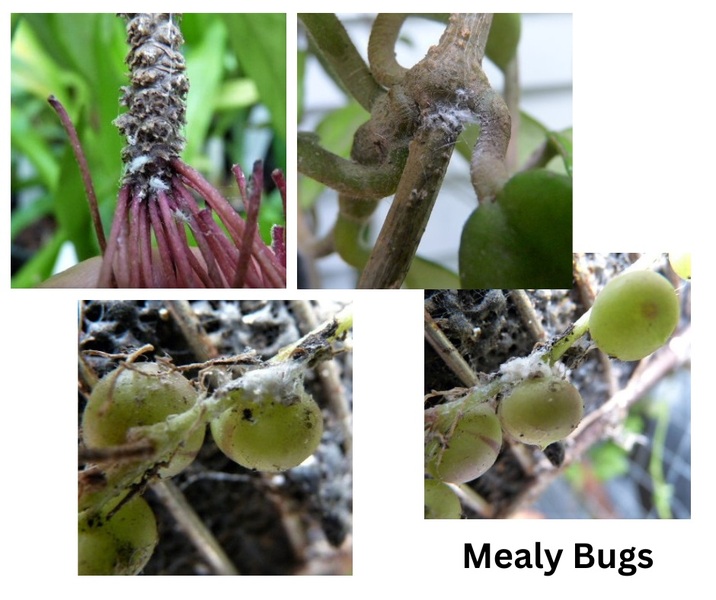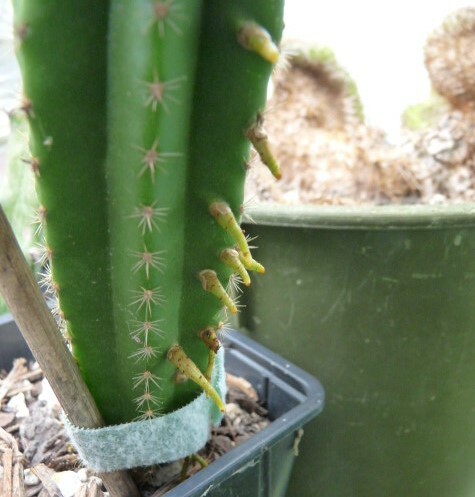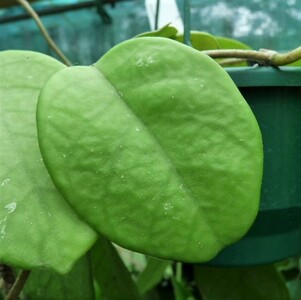Help, what's wrong with my plant?
Help, what's wrong with my plant?
How often do you see this asked? So often, right? But you need to break the question down and get more information before it can be answered.
Firstly, is the whole plant affected or just a few leaves? A new plant owner might worry when they see a leaf yellowing or dying. When it is just natural for an old leaf to be cast off.
Drainage
- Does the pot have good drainage? Preferably with a drainage hole.
- Does it sit in a cover pot, where water can accumulate?
- Is the soil the right mix for this plant’s needs? Succulents prefer extra pumice.
- Is it planted into terracotta? These are good for succulents, but not for plants that love being damp.
Light and position of the plant
- What position do you have the plant sitting in?
- Amount of sun/light.
- Too close to a window and the plant is burning. If the leaves are damp this is even more likely to happen. Light through a window can be harsher than direct sun.
- Is it in a draft or near an air conditioning unit or another heat source?
- If your plant is a succulent of any type, then it should be outside if at all possible. So many plants sold as indoor plants are succulents. Cacti, chain of hearts, pearls, and tradescantia to name a few. Click here to read more about succulent and cacti light requirements.
Water
- Does your plant have a dormancy period, and should stop or reduce the water accordingly? Dormant periods are not always winter either.
- How much water do you give it?
- How often do you water it?
A teaspoon full every day. A cup every second day. Or do you pour it on, let it run through and then do it again?
Do you check if your plant needs watering?
- Some plants you can tell, just by looking at them, as they get floppy. Others you can feel that they need some water. Some fleshy succulents you can tell by giving them a gentle squeeze. Hoya leaves can be checked by flicking the leaf’s edge. Very supple leaves, means they need some water asap. A firmer leaf means you can wait a bit longer before watering it again.
These dehydrated plants perked up with a drink of water. Hoya motoskei, Pleiospilos, cheiridopsis denticulata, and dorsteria.
- Feel the soil deeper down, lift the pot up, and feel how heavy it is (before & after watering). Watering should be done on an as-needs basis. Not all plants have the same requirements. Especially depending on the time of year and temperature in their environment. Some prefer very little water; others like to have damp soil all the time.
- If the water seems to be running straight through, the soil may have become hydrophobic. Dunking the whole pot and plant into deep water and watching until the bubbles finish escaping can sometimes fix this. Otherwise, a full repot, breaking up the root ball is required.
I tend to underwater my plants. I can always apply more water if I see the plant hasn’t had enough. But if you overwater then it is so much harder to remove or fix the problem.
Soil
- When was the last time you repotted it? Having a label with the date is a good way of checking. You would be surprised, thinking it was only last year, but in fact, it was 3 years ago.
- Pick up the pot. Is it heavy or super light? If using a plastic pot, is it firm, or are they bulges on the outside of the pot?
- Are there roots protruding from the bottom?
- Is the soil on top full of roots and you can’t even poke a pencil in it?
Fertiliser
- Do you fertilise your plants?
- If so, how much and how often?
- Hopefully with something recommended for your plant.
- There is a vast difference between giving your plants some Epsom salts as opposed to a full spectrum fertiliser.
- Epsom salts are a tonic and will not cover all the plant’s mineral deficiencies.
A small amount of lime also often aids yellowing plants.
Insects and Diseases
- Check thoroughly for any unusual signs on your plant.
- Colour changes.
- Deformed leaves.
- Weird patterns on the leaves.
- Holes.
- Lumps.
- Spiderwebs.
- Sticky residue.
- Can you see any bugs hopping, crawling, or flying about?
Insect damage

Mites, spider mites, caterpillars, slugs or snails, scale insects




Without seeing a plant’s conditions, it is hard to tell for certain what is affecting a plant. So, I have given some basic suggestions below.
Overall leaf colour changes – This could mean mineral deficiencies. But can also be from over or underwatering. Even insects at times can alter the colour of a leaf over time.
Deformed leaves could be due to a virus or disease. But then could also just be from a caterpillar attacking your plant.



 Fungal diseases which are more common when there is high humidity
Fungal diseases which are more common when there is high humidity
If your plant has any of these symptoms, it never hurts to give it a treatment to see if it helps. A dunking in a good pesticide, spraying with a fungicide, as well as applying a balanced fertiliser. Not all at once, and only after you are sure that the root zone is still healthy.
There are alternatives to store-purchased pesticides. But most of them, you need to reapply often to get all the life cycles of the pesky insects. For example, the white fluff you see of mealy bugs is the adult female. The eggs and the flying males are harder to eliminate.
- Isoprop diluted. Can be dabbed onto individual bugs or sprayed. Also, good to add to your pesticide, as this helps break the insect’s outer shell.
- Methylated Spirits - diluted. Dabbed or sprayed on. Also great as a sterilising agent on pruners etc.
- Soapy water. Works well for aphids. But the dead skins do not always wash off. Also, good to add to your pesticide spray as a sticking agent.
- Another product that has multi uses is Diatomaceous Earth. Check it out here
If you have read this far and still wonder what is wrong with the plant in the cover photo, it is a grafted plant and the top is producing its own roots. Possibly because the bottom is not sustaining it enough, so it is trying to secure itself and reach more food and water. I should remove that top growth and let it grow on its own roots now, which it will easily do.
Happy to share what I have learnt. I have attended various courses. Also have been trained onsite and worked in the horticulture industry. So, I do have a vast amount of practical knowledge.
Posted: Tuesday 21 March 2023
Recent Posts
Archive
Tags
| Top |









